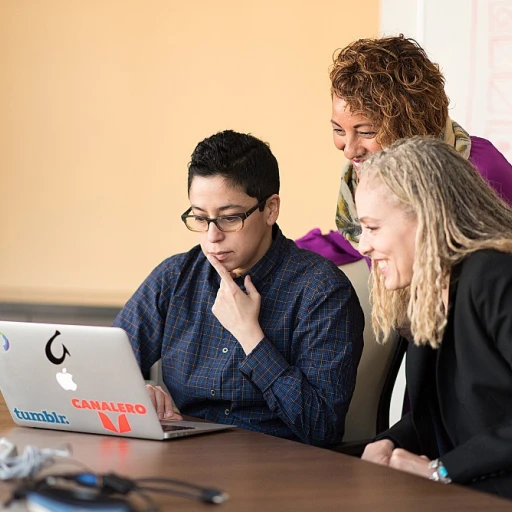
Understanding the Hope-Centered Model
Delving into the Heart of the Model
The Hope-Centered Model in professional mentoring is a transformative approach that emphasizes the profound impact of hope, theory, and action in career development. Coined in relation to career management, it provides a framework where individuals—whether mentors or mentees—can thrive with an increased sense of direction and purpose.
At its core, the model integrates the principles derived from action theory and career flow, along with a focus on goal-oriented strategies. It channels hope into a structured methodology that elevates the mentor-mentee relationship, creating a path toward fruitful career interventions. This approach not only aids in effective career planning but also supports goal setting that is essential for development.
Grounded in extensive research and practical application, the hope-centered framework employs a systematic method that encourages clients to actively engage in their career paths. The Hope-Centered Model goes beyond traditional career counseling by promoting a balanced integration of the emotional and cognitive components of career decisions. Through this model, individuals are better equipped to maneuver the challenges of career development, fostering an environment where hope and action take center stage.
For mentors seeking to implement this model as part of their mentoring strategies, a deep understanding of its components is crucial. By tapping into the potential of structured mentoring sessions, mentors are in a better position to guide their clients through a seamless process of exploration and growth, effectively aligning their professional aspirations with realistic plans of action.
The Role of Hope in Mentoring Relationships
Fostering Hope in Mentoring Dynamics
The heart of the mentoring relationship beats with hope, a fundamental element driving both individuals towards growth and success. Hope offers a beacon of light and becomes the fuel that energizes the mentoring process, ensuring clients and mentors remain committed to their journey. But how does hope manifest in a practical, action-oriented fashion within mentoring? Hope, understood as a powerful motivational force, plays a critical role in career development. It empowers clients to envision future possibilities and align their actions towards reaching these aspirations. Here’s how hope translates into strength within mentorship:- Goal Setting: Hope encourages clear goal setting. By framing the career planning trajectory within a hope-centered model, mentors help clients set attainable, oriented goals that reflect both personal and professional ambitions. This structured approach is crucial for career counseling and management.
- Action Theory: With hope-infused belief, mentors and clients employ action theory to craft actionable steps. These steps enable the achievement of set goals, ensuring the flow of continuous development in their career paths.
- Harnessing Career Flow: Hope sustains momentum, facilitating career flow where individuals experience meaningful progress. It keeps the client engaged and motivated, transforming setbacks into opportunities for career interventions and planning.
- Theoretical Foundations: Hope action theory, as explored in the context of successful career interventions, suggests that hopeful thinking is aligned with job satisfaction and career advancement. By influencing clients’ perceptions and expectations, hope guides them through the centered model of career development.
Building a Hopeful Mentoring Environment
Creating an Atmosphere of Optimism
Building a hopeful mentoring environment is crucial for fostering productive and meaningful relationships between mentors and mentees. The hope-centered model emphasizes the importance of cultivating an atmosphere where both parties feel encouraged and supported in their career development journey. This involves creating a space where hope is not just an abstract concept but a tangible force driving action and growth.
Implementing Action-Oriented Strategies
Incorporating action-oriented strategies is essential for mentors aiming to instill hope in their mentees. By focusing on goal setting and career planning, mentors can guide their mentees through the process of identifying and achieving their professional aspirations. This approach aligns with the principles of career counseling and action theory, providing a structured framework for mentees to follow.
- Goal Setting: Encourage mentees to set realistic and achievable goals. This not only boosts their confidence but also provides a clear path for their career management.
- Regular Check-ins: Establish a routine of regular meetings to discuss progress and address any challenges. This helps maintain momentum and keeps the hope centered environment alive.
- Positive Reinforcement: Celebrate successes, no matter how small, to reinforce a sense of accomplishment and encourage further action.
Fostering a Collaborative Relationship
Collaboration between mentors and mentees is key to sustaining a hopeful mentoring environment. This involves open communication, mutual respect, and a shared commitment to achieving the mentee's career goals. By working together, mentors and mentees can create a dynamic where hope is continually renewed and reinforced.
To establish a strong foundation of trust and collaboration, consider exploring strategies on establishing trust between mentors and mentees. This resource offers valuable insights into building a relationship where hope and optimism can thrive.
Challenges and Solutions in Hope-Centered Mentoring
Overcoming Roadblocks in Hope-Centered Mentoring
Navigating the waters of career development with the hope-centered model can present unique challenges for both mentors and mentees. These obstacles can strain the mentoring relationship and impact the overall experience. However, every challenge can be an opportunity for growth if approached with the right mindset.- Resistance to Change: One common challenge is resistance to change. People naturally hesitate to step out of their comfort zones, even when they recognize the potential growth. Mentors can address this by encouraging goal setting and helping mentees see the benefits of their career path through a counseling approach. By illustrating potential gains and fostering hope, resistance can be transformed into action oriented growth.
- Maintaining Flow: Ensuring a smooth flow in the mentoring relationship is crucial. A disconnect between mentor and mentee goals can disrupt progress. Here, the centered model emphasizes alignment between the hope of both parties. It urges mentors to actively participate in creating a development association with mentees, ensuring consistent career interventions.
- Lack of Engaging Activities: Another challenge is the lack of engaging activities that nurture hope and action. It’s essential for mentors to incorporate unique strategies, such as action theory techniques, into their planning. This could involve career flow activities that are both oriented and centered around the mentee’s interests.
- Difficulty in Setting Realistic Goals: Sometimes, mentees struggle with setting achievable and realistic goals. When career goals are not in alignment with genuine capabilities, progress is hampered. Mentors must use counseling strategies to facilitate understanding and ensure that hope and career management are reconciled.
Case Studies: Success Stories with the Hope-Centered Model
Real-Life Applications and Results
In the realm of professional mentoring, concrete success stories with the Hope-Centered Model offer valuable insights into its effectiveness. Many mentoring relationships have made significant strides by embracing hope as a pivotal component, illustrating the profound impact on clients' career development. The Hope-Centered Model emphasizes career flow and the action theory of development, focusing on oriented hope that propels both mentors and mentees forward. Mentors encourage goal setting and career planning, facilitating clients in steering through their aspirations and professional pathways. One notable example of applying the Hope-Centered Model involves a client who was struggling to navigate their career management effectively. Through consistent hope-centered counseling, they could view their challenges through a fresh lens, aligning their goals with strategic action plans. This approach not only improved their career flow but also empowered them to make decisive career interventions—all culminating in a successful career transition. Moreover, in cases where individuals faced pivotal transitions, the action-oriented aspect of this model empowered them to take decisive steps. This was particularly evident in career counseling sessions, where clients, with the help of their mentors, engaged in oriented goal setting to overcome hurdles and reach their aspirations. These success stories highlight the centered model's ability to transform theory into action, ensuring mentors and clients achieve their career objectives. By fostering a hopeful framework, mentors enable impactful career development and career planning, thus significantly contributing to the mentees' success stories.Practical Steps for Mentors and Mentees
Steps to Foster Hope and Career Development
Incorporating the hope-centered model into professional mentoring involves a series of actionable steps that both mentors and mentees can take to ensure a fruitful relationship. This approach, rooted in hope theory, emphasizes the importance of setting clear goals and developing a plan to achieve them. Here are some practical steps to guide you:
- Establish Clear Goals: Begin by identifying specific career goals. This helps in creating a focused and goal-oriented mentoring relationship. Clear goals provide direction and motivation, aligning with the hope action theory.
- Develop an Action Plan: Once goals are set, create a detailed action plan. This plan should outline the steps necessary to achieve the desired outcomes, incorporating elements of career planning and development.
- Encourage Continuous Learning: Promote an environment where both mentor and mentee are committed to ongoing learning. This can involve engaging with career management resources, such as relevant journals and publications.
- Foster Open Communication: Maintain open lines of communication to discuss progress, challenges, and solutions. This ensures that both parties remain aligned and can adjust plans as needed.
- Utilize Career Interventions: Implement career interventions when necessary to address any obstacles. These interventions should be based on the hope-centered model and tailored to the client's needs.
- Monitor Progress: Regularly review progress towards goals. This helps in maintaining momentum and making necessary adjustments to the action plan.
- Celebrate Achievements: Recognize and celebrate milestones. This not only boosts morale but also reinforces the positive aspects of the mentoring relationship.
By following these steps, mentors and mentees can create a dynamic and supportive environment that promotes career development and hope. The hope-centered model, with its focus on goal setting and action-oriented strategies, provides a robust framework for effective mentoring relationships.












